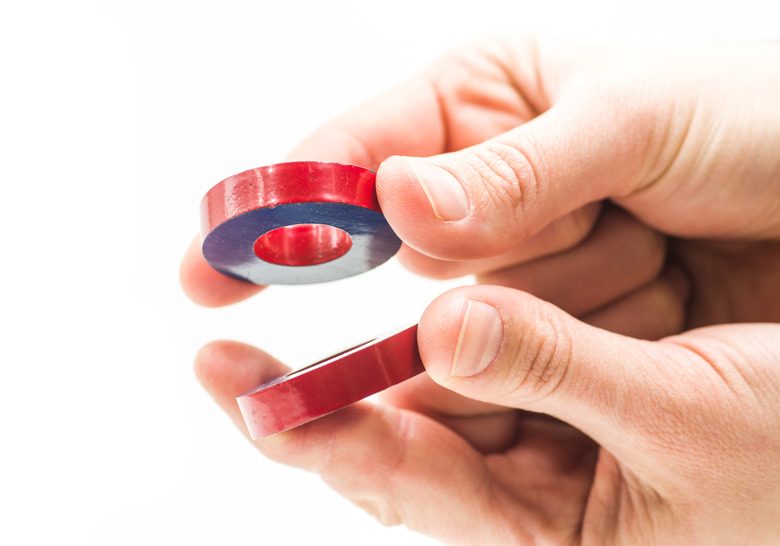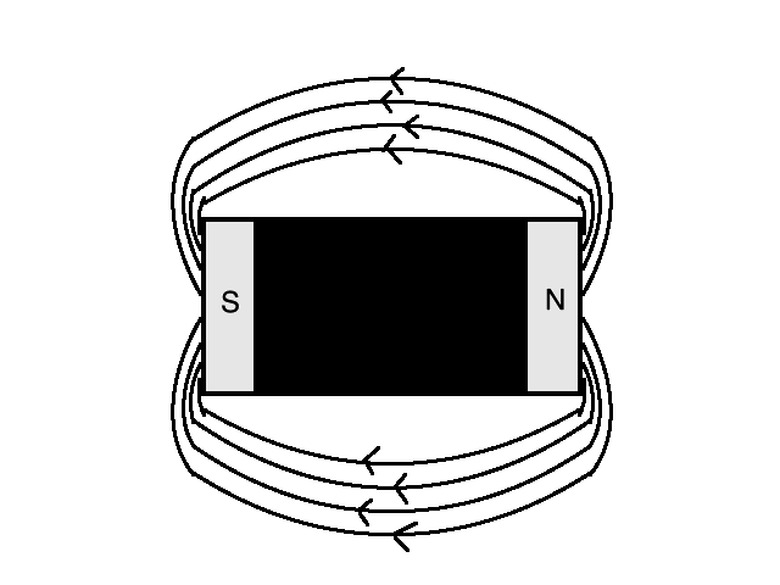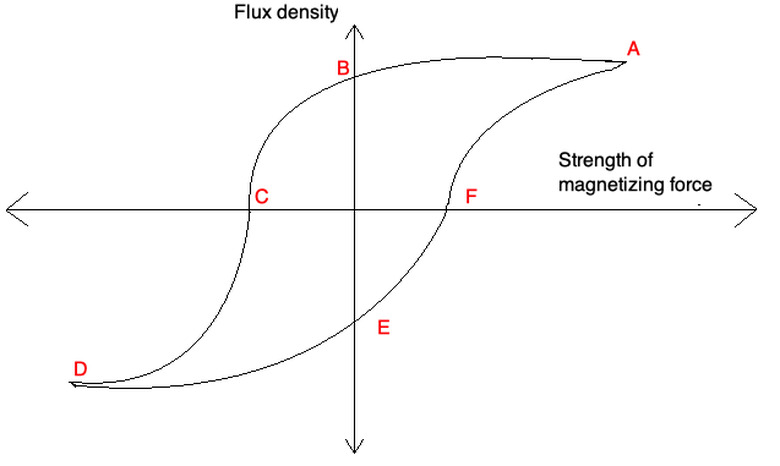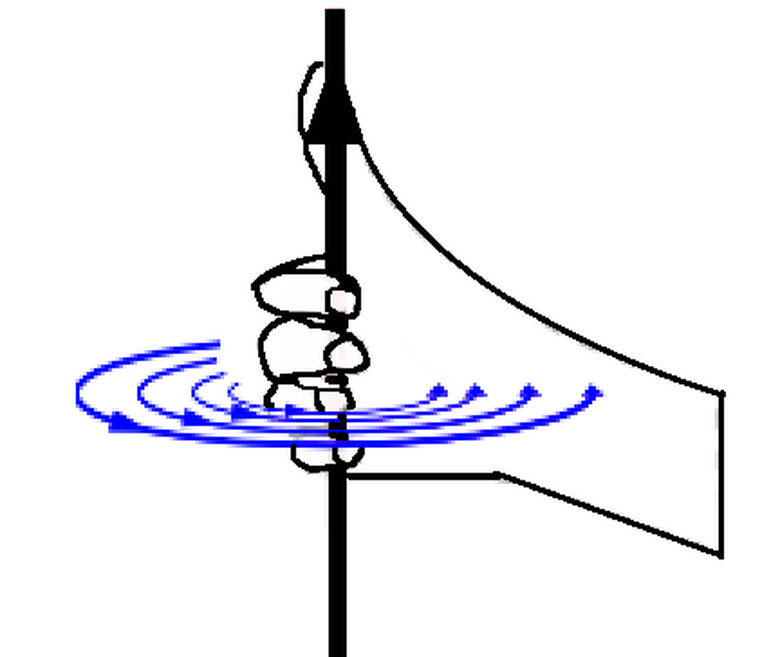How To Measure The Strength Of Magnets
Magnets come in many strengths, and you can use a gauss meter to determine the strength of a magnet. You can measure the magnetic field in teslas or the magnetic flux in webers or Teslas • m2 ("tesla square meters"). The magnetic field is the tendency for a magnetic force to be induced on moving charged particles in the presence of these magnetic fields.
Magnetic flux is a measurement of how much of a magnetic field passes through a certain surface area for a surface such as a cylindrical shell or a rectangular sheet. Because these two quantities, field and flux, are closely related, both are used as candidates for determining the strength of a magnet. To determine the strength:
1. With a gauss meter, you can take the magnet to an area where no other magnetic objects (such as microwaves and computers) are nearby. 2. Place the gauss meter directly on on the surface of one of the magnet's poles. 3. Locate the needle on the gauss meter and find the corresponding heading. Most gauss meters have a range of 200 to 400 gauss, with 0 gauss (no magnetic field) in the center, negative gauss on the left and positive gauss on the right. The further to the left or right the needle lies, the stronger the magnetic field.
The power of magnets in different contexts and situations can be measured by the amount of magnetic force or magnetic field they give off. Scientists and engineers take into account magnetic field, magnetic force, flux, magnetic moment and the even the magnetic nature of the magnets they use in experimental research, medicine, and industry when determining how strong magnets are.
You can think of the gauss meter as a magnetic strength meter. This method of magnetic strength measurement can be used for determining the magnetic strength of air freight that needs to be strict about carrying neodymium magnets. This is true because the neodymium magnet strength tesla and the magnetic field that it produces can interfere with the GPS of the aircraft. The neodymium magnetic strength tesla, like that of other magnets, should decrease by the square of the distance away from it.
Magnetic Behavior
Magnetic Behavior
The behavior of magnets depends on the chemical and atomic material that make them up. These compositions let scientist and engineers study how well the materials let electrons or charges flow through them to allow magnetization to occur. These magnetic moments, the magnetic property to give the field a momentum or rotational force in the presence of a magnetic field, depend largely on the material that make the magnets in determining whether they're diamagnetic, paramagnetic or ferromagnetic.
If magnets are made of materials that have no or few unpaired electrons, they're diamagnetic. These materials are very weak and, in the presence of a magnetic field, they produce negative magnetizations. It's difficult to induce magnetic moments in them.
Paramagnetic materials have unpaired electrons so that, in the presence of a magnetic field, the materials exhibit partial alignments that give it a positive magnetization.
Finally, ferromagnetic materials such as iron, nickel or magnetite have very strong attractions such that these materials make up permanent magnets. The atoms are aligned in such a way that they exchange forces easily and let current flow through with great efficiency. These make for powerful magnets with exchange forces that are about 1000 Teslas, which is 100 million times stronger than the Earth's magnetic field.
Magnetic Strength Measurement
Scientists and engineers generally refer to either the pull force or the strength of the magnetic field when determining the strength of magnets. Pull force is how much force you need to exert when pulling a magnet away from a steel object or another magnet. Manufacturers refer to this force using pounds, to refer to the weight that this force is, or Newtons, as a magnetic strength measurement.
For magnets that vary in size or magnetism across their own material, use the magnet's pole surface to make a magnetic strength measurement. Make magnetic strength measurements of the materials you want to measure by remaining far from other magnetic objects. Also, you should only use gauss meters that measure magnetic fields at less than or equal to 60 Hz alternating current (AC) frequencies for home appliances, not for magnets.
Strength of Neodymium Magnets
The grade number or N number is used to describe the pull force. This number is approximately proportional to the pull force for neodymium magnets. The higher the number, the stronger the magnet. It also tells you the neodymium magnet strength tesla. An N35 magnet is 35 Mega Gauss or 3500 Tesla.
In practical settings, scientists and engineers can test and determine the grade of magnets using the maximum energy product of the magnetic material in units of MGOes, or megagauss-oesterds, which is the equivalent of about 7957.75 J/m3 (joules per meter cubed). The MGOes of a magnet tell you the maximum point on the magnet's demagnetization curve, also known as BH curve or hysteresis curve, a function that explains the strength of the magnet. It accounts for how difficult it is to demagnetize the magnet and how the magnet's shape affects its strength and performance.
An MGOe magnet measurement depends on the magnetic material. Among the rare earth magnets, neodymium magnets generally have 35 to 52 MGOes, samarium–cobalt (SmCo) magnets have 26, alnico magnets have 5.4, ceramic magnets have 3.4 and flexible magnets are 0.6-1.2 MGOes. While rare earth magnets of neodymium and SmCo are much stronger magnets than ceramic ones, ceramic magnets are easy to magnetize, resist corrosion naturally and can be molded into different shapes. After they've been molded into solids, though, they break down easily because they're brittle.
When an object becomes magnetized due to an external magnetic field, the atoms within it are aligned in a certain way to let electrons flow freely. When the external field is removed, the material becomes magnetized if the alignment or part of the alignment of atoms remains. Demagnetization often involves heat or an opposing magnetic field.
Demagnetization, BH or Hysteresis Curve
Demagnetization, BH or Hysteresis Curve
The name "BH curve" was named for the original symbols to represent field and magnetic field strength, respectively, B and H. The name "hysteresis" is used to describe how the current magnetization state of a magnet depends on how the field has changed in the past leading up to its current state.
In the diagram of a hysteresis curve above, points A and E refer to the saturation points in both forward and backwards directions, respectively. B and E called the retention points or saturation remanences, the magnetization remaining in zero field after a magnetic field is applied that is strong enough to saturate the magnetic material for both directions. This is the magnetic field that is left over when the driving force of the external magnetic field is turned off. Seen in some magnetic materials, saturation is the state reached when an increase in applied external magnetic field H cannot increase the magnetization of the material further, so the total magnetic flux density B more or less levels off.
C and F represent the coercivity of the magnet, how much of the the reverse or opposite field is necessary to return the magnetization of the material back to 0 after the external magnetic field has been applied in either direction.
The curve from points D to A represent the initial magnetization curve. A to F is the downward curve after saturation, and the cure from F to D is the lower return curve. The demagnetization curve tells you how the magnetic material responds to external magnetic fields and the point at which the magnet is saturated, meaning the point at which increasing the external magnetic field does not increase the material's magnetization anymore.
References
Choosing Magnets by Strength
Different magnets address different purposes. The grade number N52 is the highest possible strength with the smallest possible package at room temperature. N42 is also a common choice that comes at a cost-effective strength, even at high temperatures. At some higher temperatures, N42 magnets may be more powerful than N52 ones with some specialized versions like N42SH magnets designed specifically for hot temperatures.
Be careful when applying magnets in areas of high amounts of heat, though. Heat is a strong factor in demagnetizing magnets. Neodymium magnets generally lose very little strength over time, however.
Magnetic Field and Magnetic Flux
For any magnetic object, scientists and engineers denote the magnetic field as it drives from the north end of a magnet to its south end. In this context, "north" and "south" are arbitrary characteristics of the magnetic to make sure the magnetic field lines carry this way, not the cardinal directions "north" and "south" used in geography and location.
Calculating Magnetic Flux
You can imagine magnetic flux as a net which catches amounts of water or liquid that flow through it. Magnetic flux, which measures how much of this magnetic field B passes through a certain area A can be calculated with
\(\Phi = BA\cos{\theta}\)
in which θ is the angle between the line perpendicular to the surface of the area and the magnetic field vector. This angle lets magnetic flux account for the how the shape of the area can be angled with respect to the field to capture different amounts of the field. This lets you apply the equation to different geometrical surfaces such as cylinders and spheres.
For a current in a straight wire I, the magnetic field at various radii r away from the electrical wire can be calculated using Ampère's Law
\(B=\frac{\mu_0I}{2\pi r}\)
in which _μ0_ ("mu naught") is _1.25 x 10-6 H/m_ (henries per meter, in which henries measure inductance) the vacuum permeability constant for magnetism. You can use the right-hand rule to determine the direction these magnetic field lines take. According to the right-hand rule, if you point your right thumb in the direction of electric current, the magnetic field lines will form in concentric circles with the direction given by the direction in which your fingers curl.
If you want to determine how much voltage results from changes in magnetic field and magnetic flux for electrical wires or coils, you can also use Faraday's Law,
\(V=-N\frac{\Delta (BA)}{\Delta t}\)
in which N is the number of turns in the coil of wire, Δ(BA) ("delta B A") refers to the change in the product of magnetic field and an area and Δt is the change in time over which the motion or movement occurs. This lets you determine how changes in voltage result from changes in the magnetic environment of a wire or other magnetic object in the presence of a magnetic field.
This voltage is an electromotive force that can be used to power circuits and batteries. You can also define the induced electromotive force as the negative of the rate of change of the magnetic flux times the number of turns in the coil.
Cite This Article
MLA
Ather, S. Hussain. "How To Measure The Strength Of Magnets" sciencing.com, https://www.sciencing.com/measure-strength-magnets-7520549/. 27 December 2020.
APA
Ather, S. Hussain. (2020, December 27). How To Measure The Strength Of Magnets. sciencing.com. Retrieved from https://www.sciencing.com/measure-strength-magnets-7520549/
Chicago
Ather, S. Hussain. How To Measure The Strength Of Magnets last modified March 24, 2022. https://www.sciencing.com/measure-strength-magnets-7520549/



